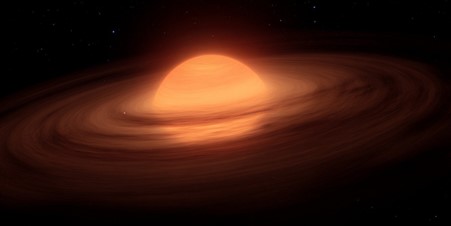The SpaceX Crew Dragon Endurance spacecraft is seen as it lands with NASA astronauts Anne McClain and Nichole Ayers, JAXA (Japan Aerospace Exploration Agency) astronaut Takuya Onishi, and Roscosmos cosmonaut
Hot Posts435- Page
Ice crystals in Earth’s atmosphere sometimes align just right to create various striking visual effects, from a halo around the moon, to bright spots called sundogs on either side of
Thick clouds prompted SpaceX to call off Thursday’s planned launch of four astronauts to the International Space Station for NASA.
Space: it’s no longer just for astronauts in bulky suits. In recent years, some of the world’s most recognizable celebrities have strapped in and blasted off into microgravity. From billionaires
Jared Isaacman is donating a big chunk of change to help inspire the astronauts and space scientists of tomorrow. The billionaire tech entrepreneur and private astronaut, who until recently was
Our parochial view of planets orbiting a central star — so familiar because it is the layout seen in the solar system — could be irrevocably shattered by new research
Ever so silently and right in plain sight, the “A Quiet Place” universe has become one of Hollywood’s best sci-fi horror franchises, and now a fourth installment is officially in
Just a short distance inland from the waves crashing against California’s shore, NASA’s Relativistic Electron Atmospheric Loss (REAL) CubeSat mission launched into the sky, taking off at 2:13 p.m. ET
Peacock TV is currently offering one of the best streaming deals we’ve ever seen. Aimed at students and young adults, the Peacock TV Young Adult Discount is offering anyone between
On July 11, 2022, the James Webb Space Telescope finished its commissioning and commenced science operations. In the three years since, the powerful infrared space telescope has delivered on its
-
 012024 in Review: Highlights from NASA in Silicon Valley
012024 in Review: Highlights from NASA in Silicon Valley -
 02Panasonic Leica Summilux DG 15mm f/1.7 ASPH review
02Panasonic Leica Summilux DG 15mm f/1.7 ASPH review -
 03How New NASA, India Earth Satellite NISAR Will See Earth
03How New NASA, India Earth Satellite NISAR Will See Earth -
 04And Thus Begins A New Year For Life On Earth
04And Thus Begins A New Year For Life On Earth -
 05Astronomy Activation Ambassadors: A New Era
05Astronomy Activation Ambassadors: A New Era -
06SpaceX launch surge helps set new global launch record in 2024
-
 07Space Force plans new ‘Futures Command’ amid pressure to speed up modernization
07Space Force plans new ‘Futures Command’ amid pressure to speed up modernization










